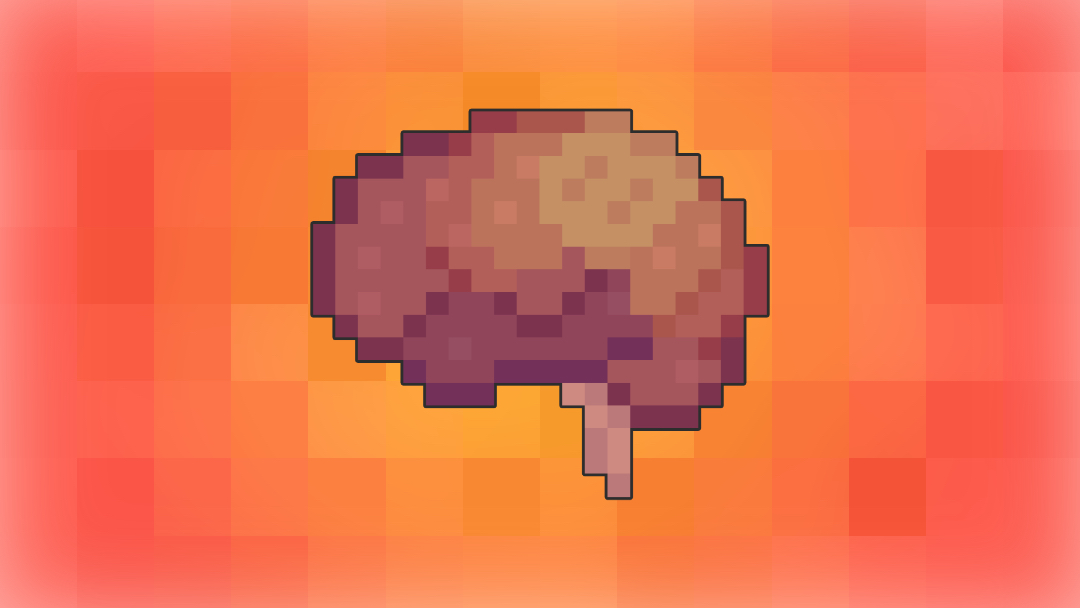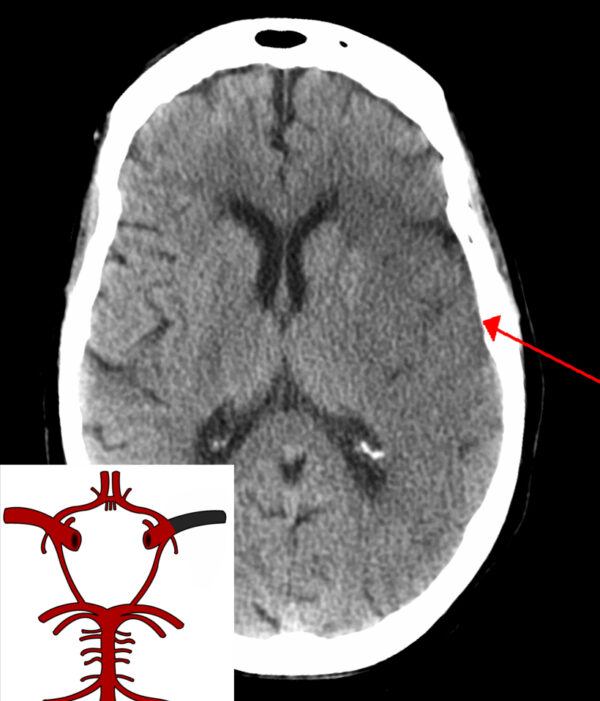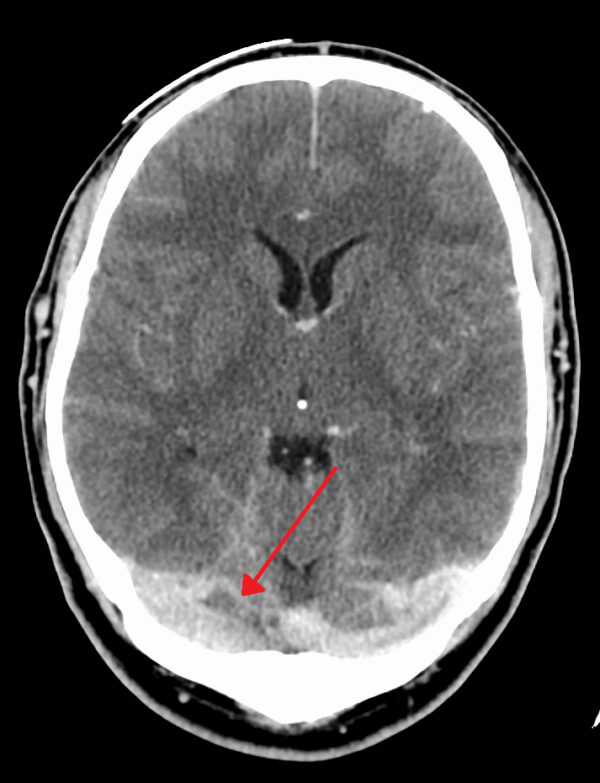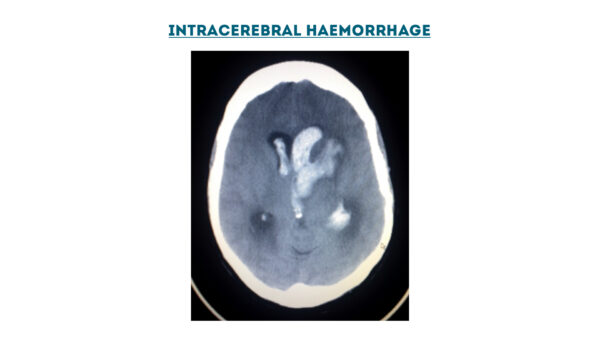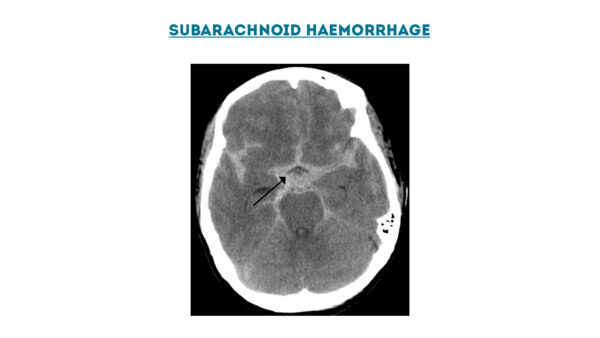- 📖 Geeky Medics OSCE Book
- ⚡ Geeky Medics Bundles
- ✨ 1300+ OSCE Stations
- ✅ OSCE Checklist PDF Booklet
- 🧠 UKMLA AKT Question Bank
- 💊 PSA Question Bank
- 💉 Clinical Skills App
- 🗂️ Flashcard Collections | OSCE, Medicine, Surgery, Anatomy
- 💬 SCA Cases for MRCGP
To be the first to know about our latest videos subscribe to our YouTube channel 🙌
This article provides an overview of the classification of stroke based on underlying pathophysiology and clinical presentation. You can also download a PDF summary of our Bamford Stroke classification guide.
Types of stroke
Strokes can be classified into two major categories: ¹
- Ischaemic stroke (87%)
- Haemorrhagic stroke (13%)
Ischaemic stroke
Ischaemic strokes occur when the blood supply to an area of brain tissue is reduced, resulting in tissue hypoperfusion.
There are several potential mechanisms which can result in an ischaemic stroke including:
- Embolism: an embolus originating somewhere else in the body (e.g. the heart) causes obstruction of a cerebral vessel, resulting in hypoperfusion to the area of the brain the vessel supplies.
- Thrombosis: a blood clot forms locally within a cerebral vessel (e.g. due to atherosclerotic plaque rupture).
- Systemic hypoperfusion: blood supply to the entire brain is reduced secondary to systemic hypotension (e.g. cardiac arrest).
- Cerebral venous sinus thrombosis: blood clots form in the veins that drain the brain, resulting in venous congestion and tissue hypoxia.
Haemorrhagic stroke
Haemorrhagic strokes occur secondary to rupture of a blood vessel or abnormal vascular structure within the brain.
There are two sub-types of haemorrhagic stroke known as intracerebral haemorrhage and subarachnoid haemorrhage.
Intracerebral haemorrhage
Intracerebral haemorrhage involves bleeding within the brain secondary to a ruptured blood vessel. Intracerebral haemorrhages can be intraparenchymal (within the brain tissue) and/or intraventricular (within the ventricles).
Subarachnoid haemorrhage
Subarachnoid haemorrhage is a type of stroke caused by bleeding outside of the brain tissue, between the pia mater and arachnoid mater.
Blood supply of the cerebrum
The anterior, middle and posterior cerebral arteries each supply a specific territory of the brain:
- The anterior cerebral arteries supply the anteromedial area of the cerebrum.
- The middle cerebral arteries supply the majority of the lateral cerebrum.
- The posterior cerebral arteries supply a mixture of the medial and lateral areas of the posterior cerebrum.
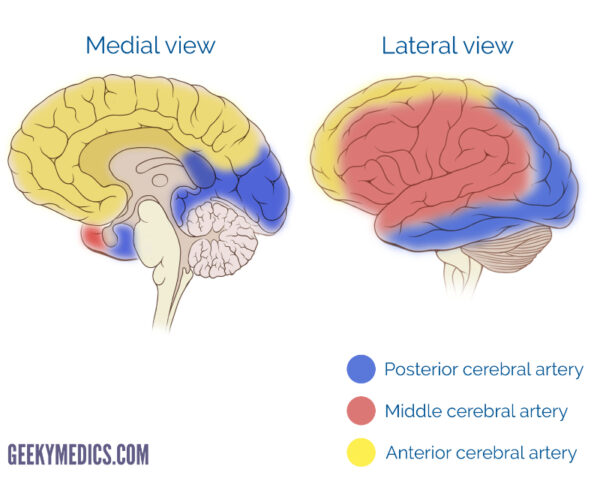
Bamford classification of ischaemic stroke
The most commonly used classification system for ischaemic stroke is the Bamford classification system (also known as the Oxford classification system). This system categorises stroke based on the initial presenting symptoms and clinical signs. This system does not require imaging to classify the stroke, instead, it is based on clinical findings alone.
Total anterior circulation stroke (TACS)
A total anterior circulation stroke (TACS) is a large cortical stroke affecting the areas of the brain supplied by both the middle and anterior cerebral arteries.
All three of the following need to be present for a diagnosis of a TACS:
- Unilateral weakness (and/or sensory deficit) of the face, arm and leg
- Homonymous hemianopia
- Higher cerebral dysfunction (dysphasia, visuospatial disorder)
Partial anterior circulation stroke (PACS)
A partial anterior circulation stroke (PACS) is a less severe form of TACS, in which only part of the anterior circulation has been compromised.
Two of the following need to be present for a diagnosis of a PACS:
- Unilateral weakness (and/or sensory deficit) of the face, arm and leg
- Homonymous hemianopia
- Higher cerebral dysfunction (dysphasia, visuospatial disorder)*
*Higher cerebral dysfunction alone is also classified as PACS.
Posterior circulation syndrome (POCS)
A posterior circulation syndrome (POCS) involves damage to the area of the brain supplied by the posterior circulation (e.g. cerebellum and brainstem).
One of the following need to be present for a diagnosis of a POCS:
- Cranial nerve palsy and a contralateral motor/sensory deficit
- Bilateral motor/sensory deficit
- Conjugate eye movement disorder (e.g. horizontal gaze palsy)
- Cerebellar dysfunction (e.g. vertigo, nystagmus, ataxia)
- Isolated homonymous hemianopia
Lacunar stroke (LACS)
A lacunar stroke (LACS) is a subcortical stroke that occurs secondary to small vessel disease. There is no loss of higher cerebral functions (e.g. dysphasia).
One of the following needs to be present for a diagnosis of a LACS:
- Pure sensory stroke
- Pure motor stroke
- Sensori-motor stroke
- Ataxic hemiparesis
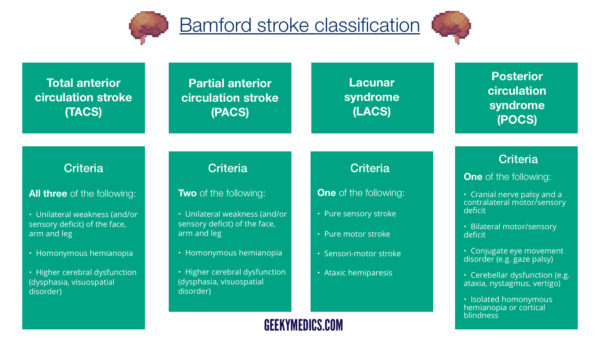
References
- Donnan GA, Fisher M, Macleod M, Davis SM (May 2008). “Stroke”. Lancet. 371 (9624): 1612–23.
- CFCF. Total anterior circulation stroke. Licence: [CC BY-SA 3.0].
- James Heilman, MD. Dural venous sinus thrombosis. Licence: [CC BY-SA 3.0].
- James Heilman, MD. Subarachnoid haemorrhage. Licence: [CC BY-SA 3.0].
- Frank Gaillard, Patrick J. Lynch. Adapted by Geeky Medics. Cerebral vascular territories. Licence: CC BY-SA.


